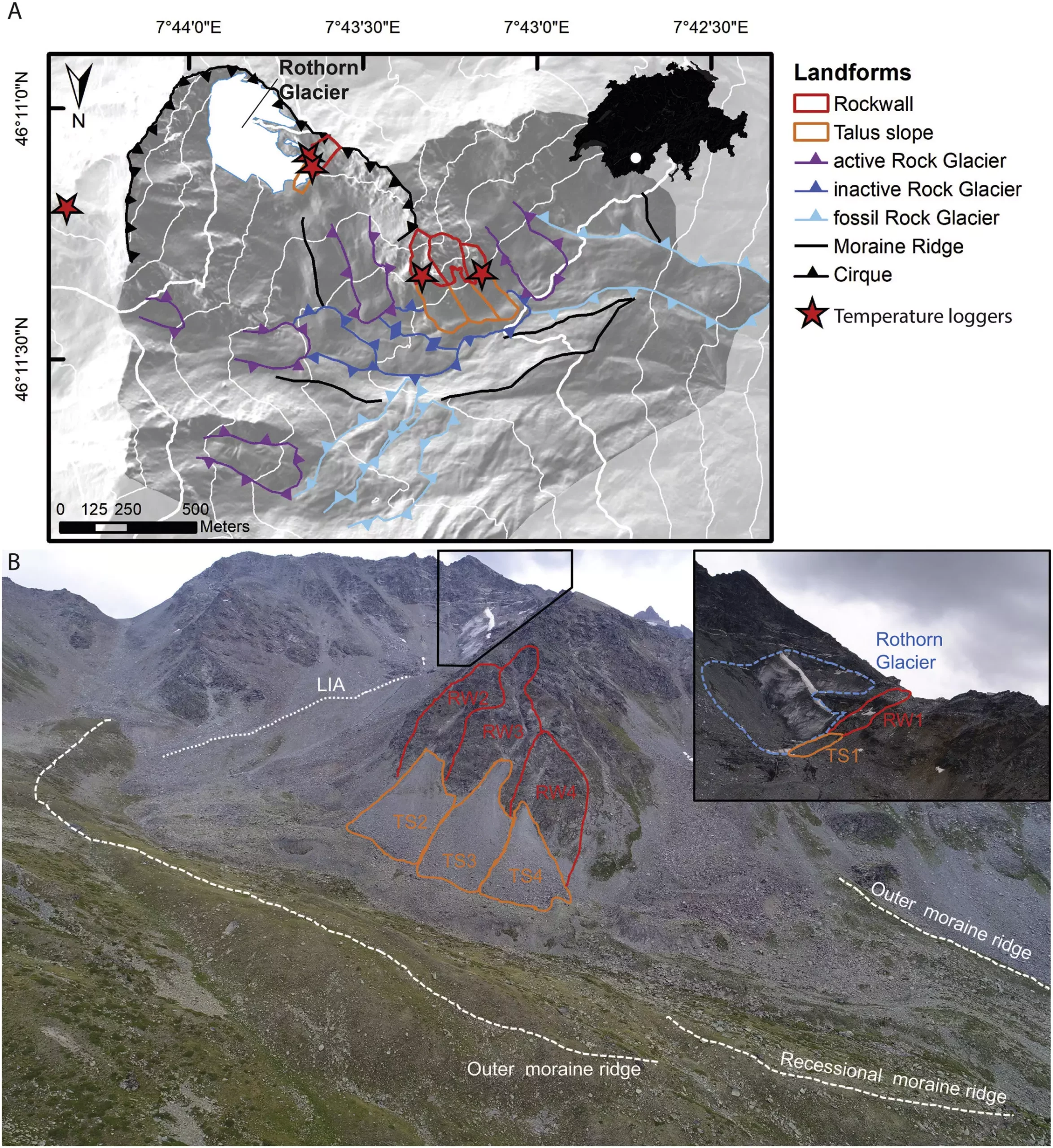Deglaciation during the Holocene period has undeniably shaped the mountainous landscapes we see today. As glaciers retreated, they left behind distinct landforms such as debris ridges and moraines. However, a recent study published in Earth and Planetary Science Letters suggests that erosion rates in these mountainous environments may be declining in more recent decades compared to earlier in the Holocene. Dr. Daniel Draebing and his colleagues from Utrecht University have specifically focused their research on the slopes of mountain bedrock, known as rockwalls, in the European Alps. Their study aims to test the role of climate warming in the changing erosion rates.
The researchers theorize that the reduced glacial load since the Younger Dryas, a glacial period that occurred approximately 12,900 to 11,700 years ago, has led to a decline in exposure of steep valley sides to erosion. To test this theory, the team combined real-world field data with modeling techniques. They calculated erosion rates based on debris at the base of the rockwall and compared measurements from around 9,000 to 10,000 years ago to more recent erosion rates between 2016 and 2019.
The researchers reconstructed the glacial retreat history of the Hungerli Valley and focused on the temperature of the rockwalls and its impact on permafrost and frost cracking. Permafrost refers to rock or soil material that remains below 0°C throughout the year. Frost cracking occurs when freezing water causes stress that breaks down the rock. The team used modeling techniques based on the porosity of the bedrock and laboratory data on rock strength to simulate frost cracking through time.
Both permafrost and frost cracking weaken the rockwalls, leading to rockfall events. The researchers conducted laser scanning surveys to record changes in rockfall activity in the Hungerli Valley during the study period. They identified a total of 263 rockfall events, with a single event reaching a maximum volume of 159.4 cubic meters. The hazardous conditions posed a significant challenge to the research team, who had to evaluate these hazards on a daily basis during their fieldwork.
The study found that higher erosion rates occurred in the middle to late Holocene on slopes that had been free of glacial ice for approximately 10,000 years. The researchers attribute this to elevated intensity of permafrost and frost cracking. Additionally, erosion rates were found to decrease rapidly over time. For example, the highest erosion rate recorded in the past five decades was two orders of magnitude higher than during the earlier Holocene, but it declined to just 0.58 mm/year by 2019. This rapid decline in erosion rate is attributed to increased frost cracking, thawing of permafrost, and landscape adjustments due to glacial ice melting.
Several factors contribute to erosion rates in mountainous environments. Low temperature and precipitation play a significant role in processes such as frost cracking and glacier retreat. Additionally, seasonal snow cover can insulate rockwalls and delay freeze-thaw processes. The research team predicts that erosion rates will reach an equilibrium similar to the current rates of 0.02 to 0.08 mm/year as climate-induced stresses decrease due to climate warming, while topographic stresses persist.
Understanding the impacts of deglaciation on mountain erosion is crucial as climate change continues to affect our world. Apart from permafrost and frost cracking, extreme weather events and large-magnitude earthquakes can also enhance erosion rates. These processes have significant implications for local landscapes, communities, alpine tourism resorts, and wildlife struggling to adapt to a changing environment. As glaciers and permafrost disappear and frost cracking decreases, erosion rates will likely continue to decline.
The research conducted by Dr. Daniel Draebing and his colleagues sheds light on the complex relationship between deglaciation, erosion rates, and climate change. This study provides valuable insights into the long-term impacts of a warming world on mountainous landscapes. By understanding these processes, we can better prepare communities, support infrastructure, and protect the delicate ecosystems that rely on these mountain environments.


Leave a Reply